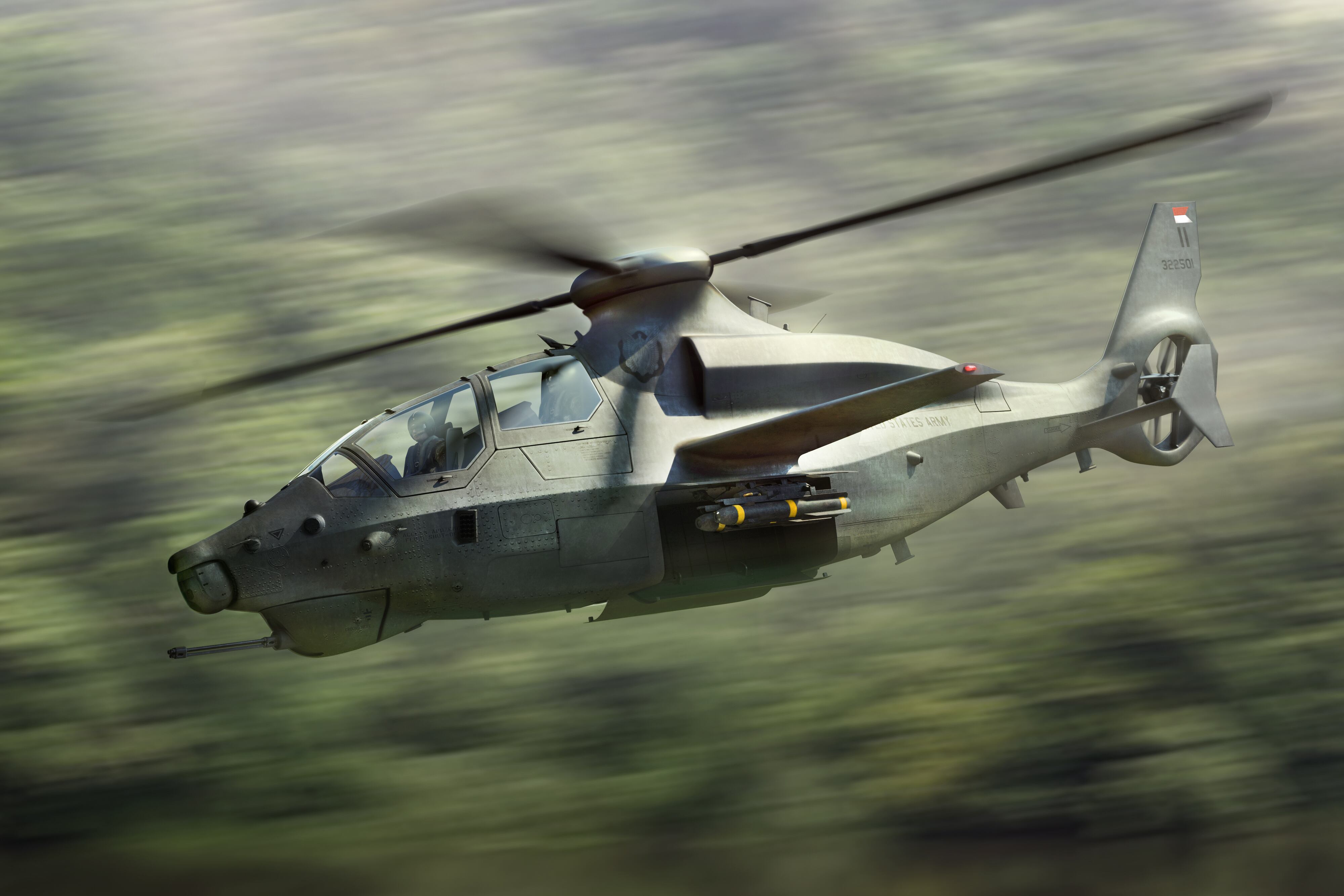WASHINGTON — The U.S. Army’s Future Attack Reconnaissance Aircraft program is heading into a major requirements review next month, during which service leaders will determine if industry designs are ready for a fly-off at the end of 2022, according to Maj. Gen. Wally Rugen, who is in charge of the Army’s future vertical lift development.
The FARA program is to fill a critical capability gap currently covered by AH-64E Apache attack helicopters teamed with Shadow drones following the retirement of the OH-58D Kiowa Warrior helicopters. The service has tried and failed three times to fill the gap with an aircraft.
The Army wrapped up its final design readiness review for FARA in December, Rugen told Defense News in an interview earlier this year. In April, the Army Requirements Oversight Council will review those new design iterations from the two companies competing to build the aircraft, Rugen said March 17, and the industry teams have already been bending metal to build prototypes for months (if not several years) in order to get the aircraft ready for flight by the end of next year.
“What we saw back on the final designs from industry were impressive to the government team. Industry really did more. I think that gets into talent management, to use an Army term, because they had a cheat rep with [Joint Multi-Role Technology Demonstration],” Rugen said. “The industry teams have really been better than we thought they would be on this design work.”
Lockheed Martin and Bell are in a head-to-head competition to build prototypes and fly them beginning in November 2022. The Army will pick which one it wants to build for the force following the competitive fly-off period.
The two companies already have experience in such a process with the Army’s other Future Vertical Lift project to procure a future long-range assault aircraft, or FLRAA. A Lockheed-owned Sikorsky and Boeing team as well as a Bell team built and flew technology demonstrators ahead of the program of record to inform requirements for the future aircraft. Those aircraft have been flying for several years and are still undergoing testing and evaluation as part of a competitive risk-reduction activity.
It is expected those two teams will compete against each other for FLRAA with offerings closely based on Joint Multi-Role Technology Demonstration systems. According to Brig. Gen. Rob Barrie, the program executive officer for Army Aviation, the FLRAA request for proposals is expected in the third quarter of fiscal 2021. The draft RFP was issued at the end of 2020.
For the FARA effort, Sikorsky has pitched a coaxial rotor blade design based off of its S-97 Raider that it is calling Raider X; and Bell unveiled its design — the 360 Invictus — at the AUSA annual conference in 2019.

As the Army pushes ahead with both future aircraft programs, Rugen was again adamant that the service has no choice but to proceed with both FARA and FLRAA, even if future defense budgets are flat or shrink. And he stressed that procuring both relatively simultaneously is possible.
He alluded to naysayers who often point to the failure of the Boeing-Sikorsky RAH-66 Comanche program, which was abruptly canceled in 2004, as a sign that things could go awry with future vertical lift endeavors, arguing there are differences when it comes to the circumstances surrounding the failure of the Comanche program and the process the Army is currently using to field future helicopters.
The Army, he added, was also trying to modernize its fleet of operational helicopters across the board at the same time. “That’s where the portfolio just labored — under that modernization effort for then a current fleet [while simultaneously] trying to jump to the future,” he said.
The service’s current fleet is modernized, Rugen said, so now the Army is focused on the two future aircraft. Additionally, industry has “significant skin in the game” this time around,” he said, because the service is flying aircraft before it is choosing to buy them.
The Army is also more efficiently spending money in the development process, partly because industry is investing so heavily. The service spent about $9 billion (adjusting for inflation) on two prototypes for the Comanche program, he said. “We’re a little over $7 billion to get 18 prototypes out on FARA and FLRAA.”
When Defense News asked which aircraft program he’d choose to advance if future budgets didn’t allow for both at the AUSA event, Rugen said: “It’s not a ‘want to have,’ it’s an imperative. Modernization is an imperative, so as long as that remains the Army priority, which I believe it will, then we’re going to continue to find ways to execute these programs. … I don’t see it as a choice.”
Jen Judson is an award-winning journalist covering land warfare for Defense News. She has also worked for Politico and Inside Defense. She holds a Master of Science degree in journalism from Boston University and a Bachelor of Arts degree from Kenyon College.




